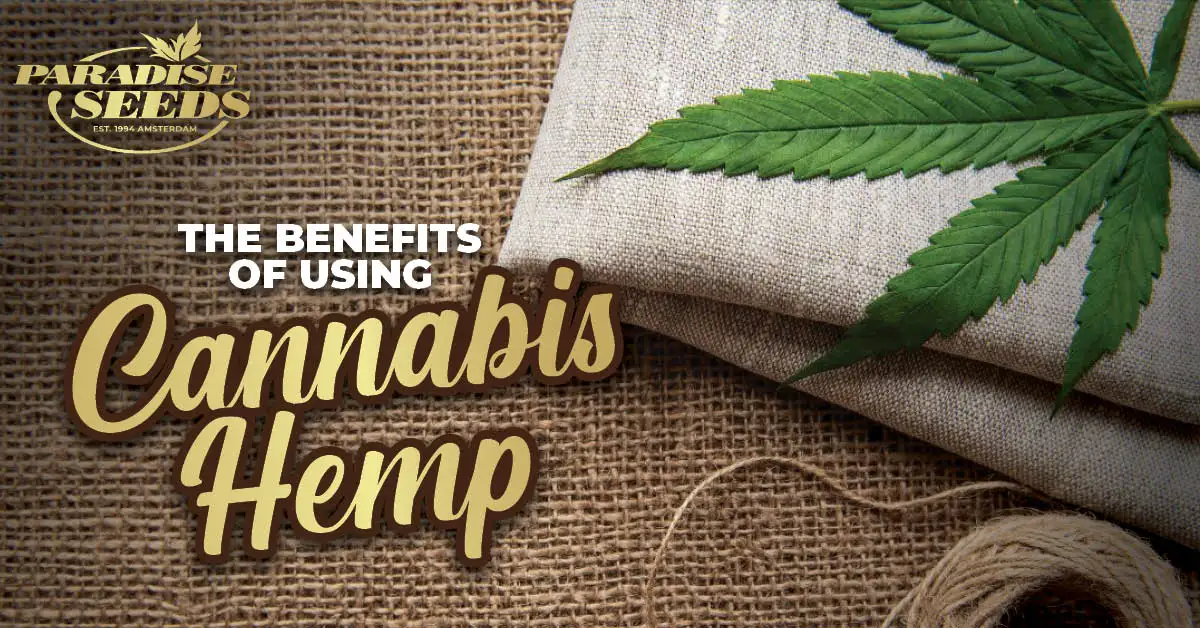Talking about weed is usually a discussion about levels of THC and CBD, terpene profiles, fast finishes and big harvests. However, there is so much more potential for the cannabis plant than its popularity for medical or recreational purposes and it is suggested that there are 25,000 uses for cannabis hemp in a whole range of products.
If you care about the planet then you should be aiming to integrate as many of those 25,000 uses for cannabis hemp into your daily life as possible! That may sound like a bold statement, but there’s a lot of evidence to suggest that it is an off-the shelf eco solution that can help counter some of the big climate challenges which consumer culture contributes to.
25,000 uses for cannabis hemp – a short list!
OK, so let’s put this into perspective with an illustration of a typical morning routine: You could be leaving your house made from hempcrete, and drive to work in a car made with hemp panelling, eating a hemp seed cookie for breakfast which is wrapped in hemp based paper packaging! And of course you will be dressed head to toe in clothes made from hemp fibers such as amazing waterproof hemp shoes made by our good friends 8000kicks.
Yes for added value your cookie could have an element of Space Cookies… but that’s probably not a good idea if you’re a) going to work and b) want to keep your driving license.
So it sounds a no-brainer right? Yes it does, but the biggest problem with this miracle plant is that, with a few exceptions, most of the world has forgotten how to grow it, process it and make products for it on the scale which is needed to influence the consumer market and push forward big changes.
Why aren’t we growing more hemp?
While there are many innovative pioneers out there, doing their best to promote this most beneficial of plants, they lack the infrastructure to benefit from economies of scale. Why so? Because production infrastructure around the world is geared towards fossil fuel based products. The most obvious bogeyman in this respect is plastic and research suggests that global plastic waste has doubled since 2000.
The other problem is faced by the agricultural process of growing hemp. Once upon a time, hemp was a traditional crop grown around the world and highly valued for its products. While it may not sound such a big deal in the 21st century, rope was a very desirable hemp based product. It has been argued that Britain built its global empire thanks to the plant as hemp was used to make the ropes and sails which powered its navy.
However, the era of cannabis prohibition, which began with the 1937 Marihuana Tax Act, effectively killed industrial hemp and the development of new synthetic materials sped up this rapid move away from natural, sustainable fibers. It is now estimated that a staggering 10% of global emissions are the result of the fashion industry.
In this way, 20th century prohibition saw hemp fields abandoned and replacement crops sown in their place and so bringing them back is proving a challenge. Growing hemp has become an ‘unknown’ quantity for farmers, who are often reluctant to take a gamble and the harvesting and processing process requires significant investment in specialist machinery. Without a major investment in the hemp cannabis sector by governments, it is very difficult to establish a viable consumer market for hemp products.
For a brief time during the 2010s it looked as if the dream of 25,000 uses for cannabis hemp could have been turned into a consumer reality, as legislation in the USA opened up hemp growing possibilities, but the perceived industrial hemp green rush failed to materialise. The dream peaked in 2019 before the market for hemp crashed as farmers lured by its potential hit the reality of labor intensive processing and lack of demand brought dramatic price drops which put many large scale hemp farmers out of business.
So, for now, hemp continues to be a niche crop for many farmers in the USA and Europe and every hemp farmer has a tale to tell about how difficult it is to make hemp a profitable crop. Nevertheless, the potential is still there and the climate crisis isn’t going away. Surely it can’t be long before government policy makers start looking for a miracle plant that can help us to grow our way out of trouble and when that happens, we will get a better view of what 25,000 uses for cannabis hemp looks like!


